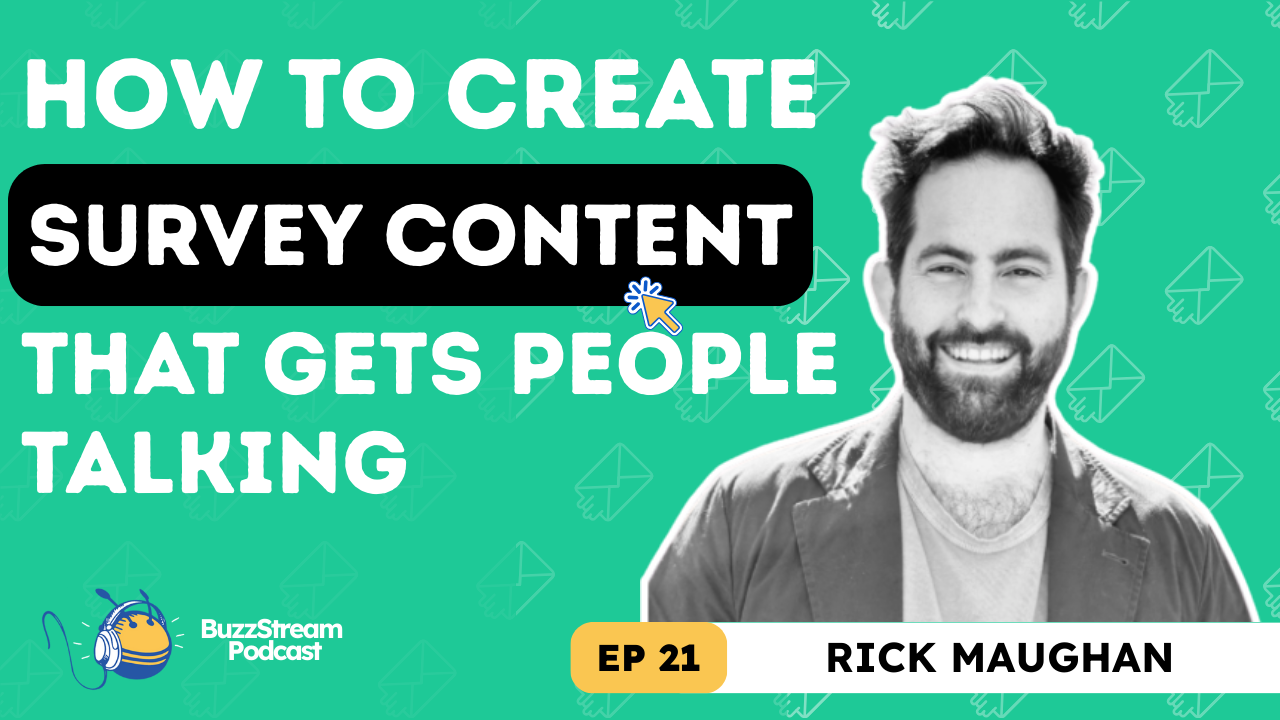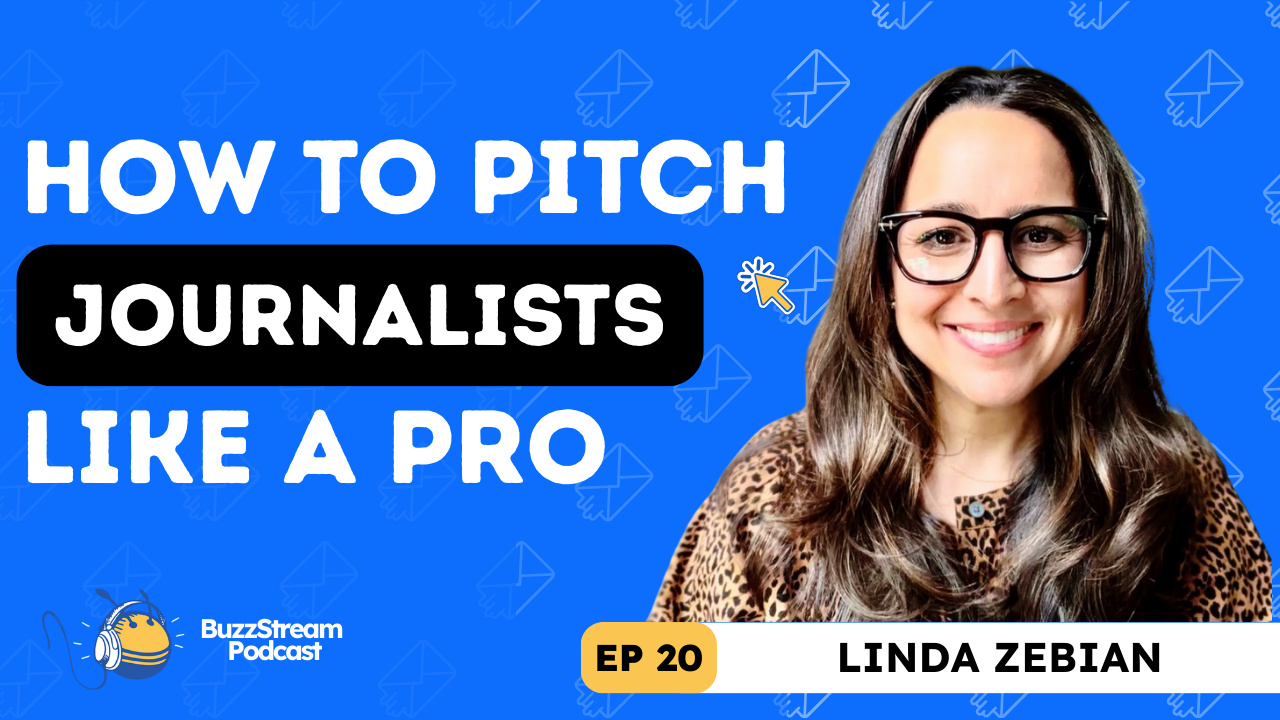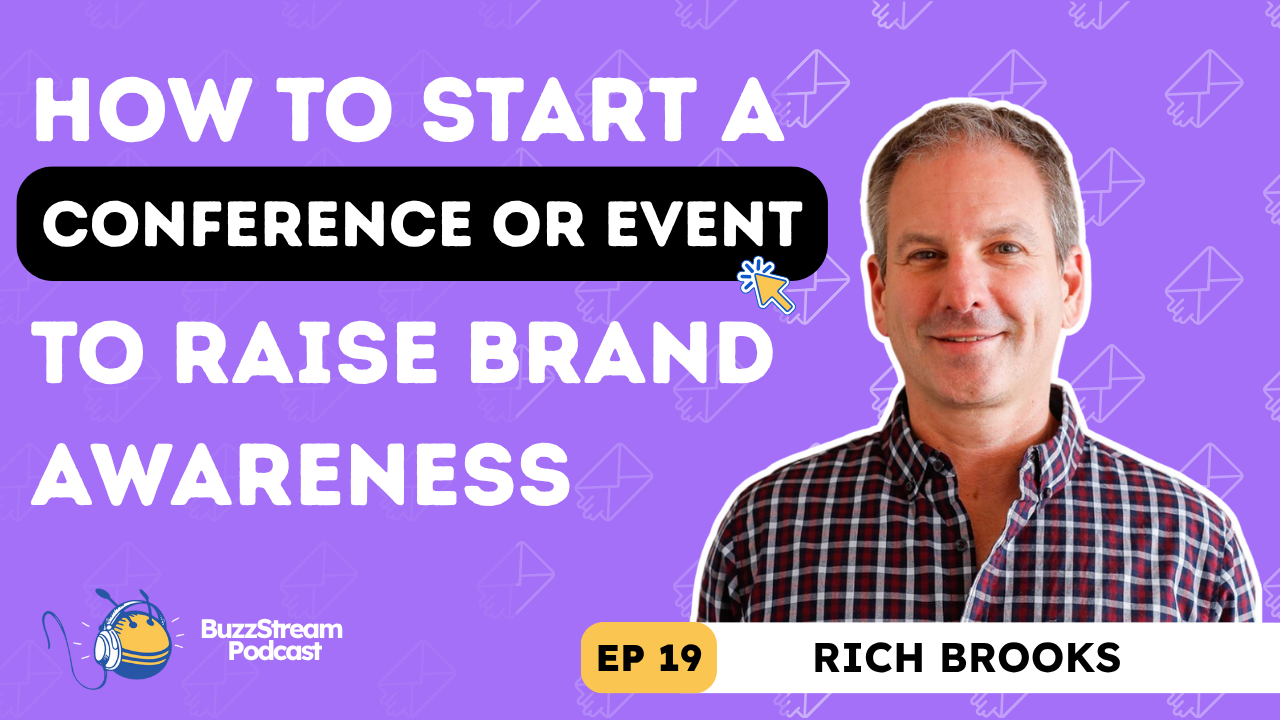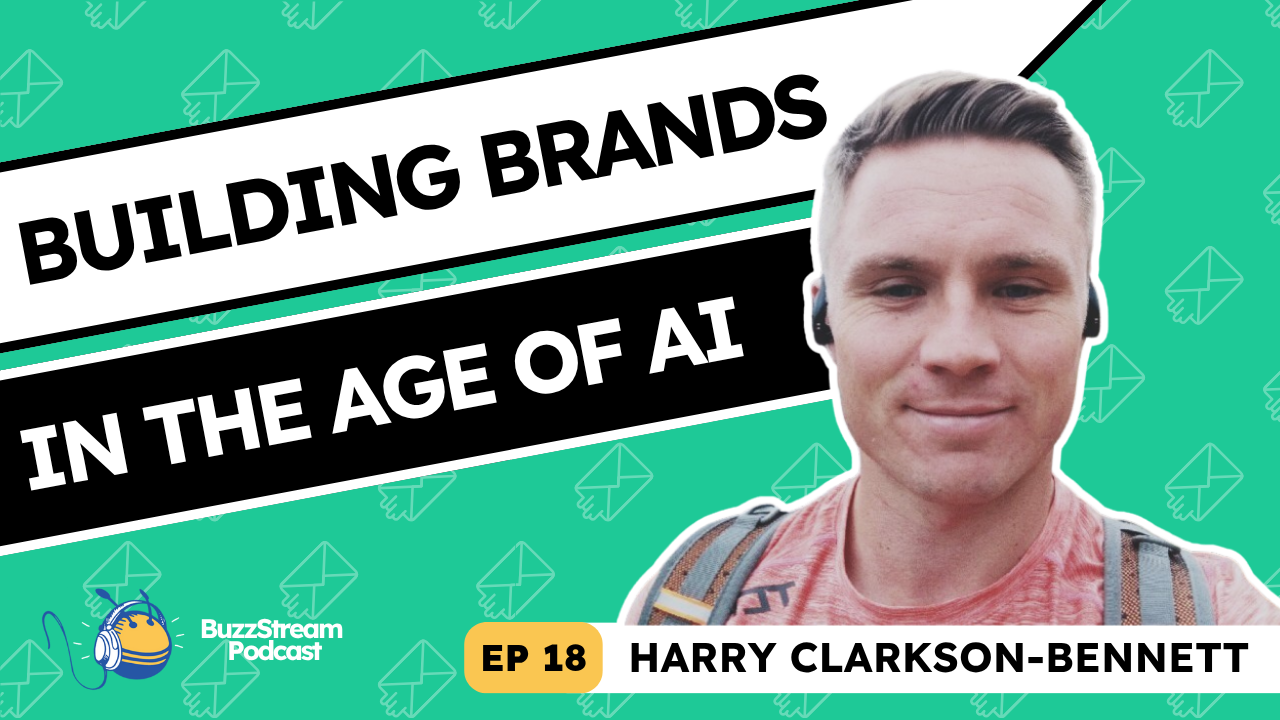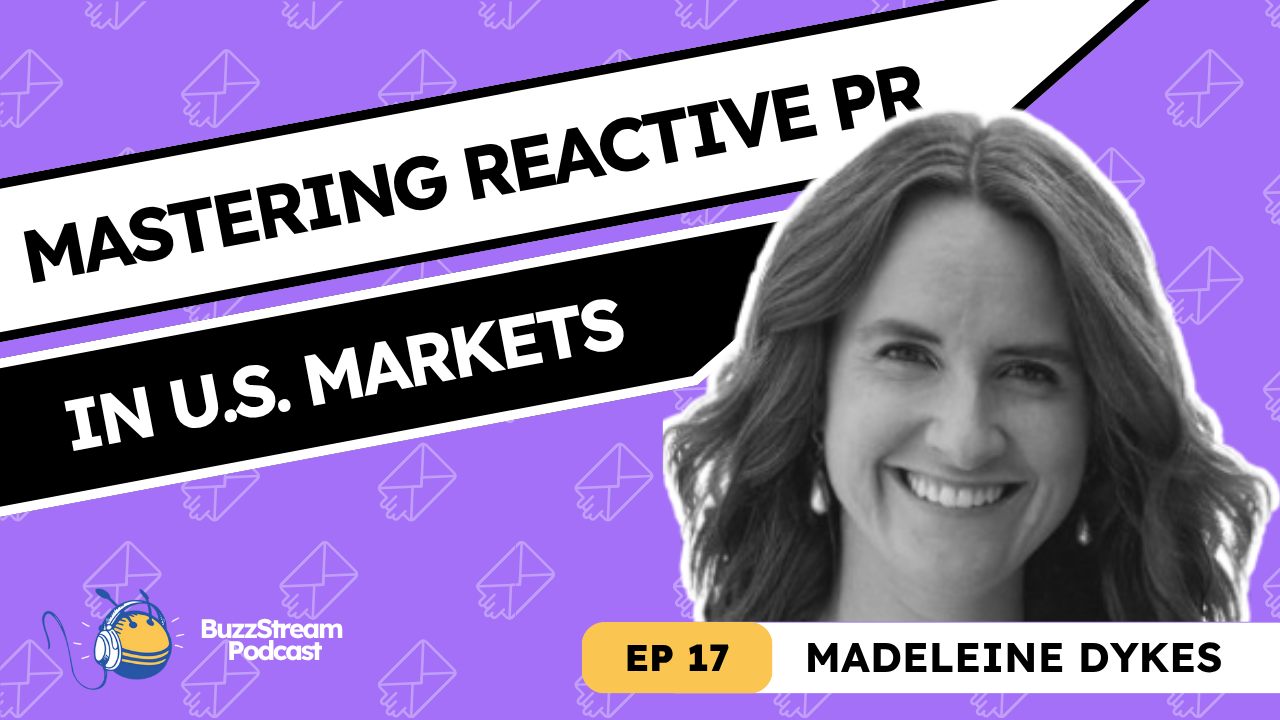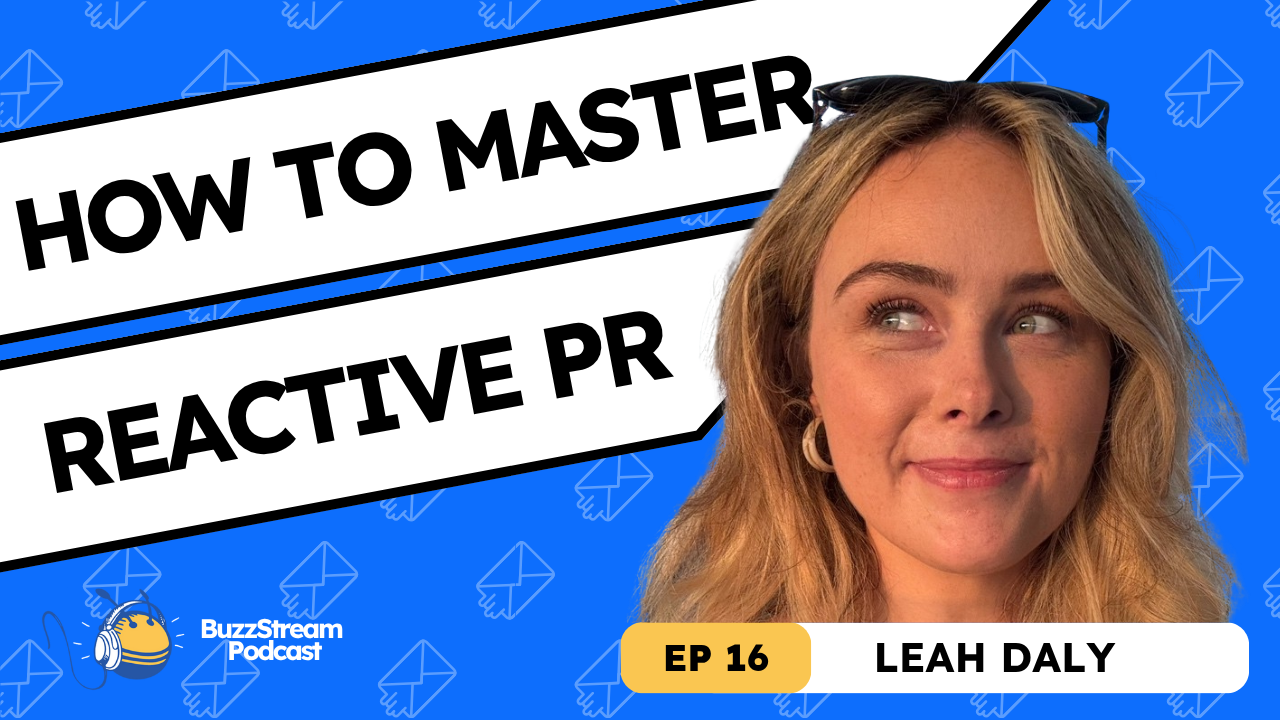Table of Contents
-
AI discoverability demands unified SEO, PR, and content strategies to boost visibility across search and AI tools.
-
SEO provides data that PR can use to craft stories aligned with what audiences are actively searching for.
-
Content roadmaps should prioritize flexibility—3-month plans work best for adapting to real-time shifts.
-
Cross-team alignment starts with shared goals, translated KPIs, and regular communication to avoid silos.
-
PR wins can help prioritize content topics, guiding teams toward what’s urgent vs. evergreen.
I’ve been hearing about and seeing Stacker explode everywhere online as AI citations become a major focus for brands, so it was awesome to pick the brain of someone integral to their success. So, I connected with Tamara Sykes, Director of Client Strategy and Insights at Stacker, on LinkedIn.
In this episode, we cover what it means to build visibility in the AI era, how to break down silos between teams, and why planning for flexibility might be the most underrated skill in marketing right now.
One of the things I love about Tamara is how relatable she can make these topics seem. Just look at this one quote around 28 minutes in our podcast:
“SEO is what people are asking about your business. PR shows people that other people vouch for you, like reviews. Then, content is just basically dating the customer.”
This mindset can sometimes help you keep you from losing sight of the forest for the trees.
Anyone in content marketing, SEO, or PR should give this a listen.

Here is a slightly edited transcript from our talk:
What has the research said about how content, SEO, and PR overlap in an AI world?
Tamara: So we’ll use one word to really describe. What’s causing the overlap, which is discoverability or another term, is visibility.
So in all of those industries separately, you know, the focus is on how you’re showing up visibly in inserts.
PR is focusing on how you’re, you know, showing up visibly in the media. And then content is just like where you’re showing up in other places. ’cause that can cross your own website, um, especially your blog as well as like social media.
For example, if you’re thinking of content under a bigger umbrella, your newsletter, etc.,
And so with AI overview, especially and just AI in general, and that pulling from different sources, you almost have to be discovered and seen as a thought leader.
I know that’s a, the term we always use, but as authority as an authoritative source, and just show that you know about all these topics and you’re showing up in all these different places for AI to reference you in the answers it’s serving to people, whether that’s in a SERP or whether that’s, that’s within an AI tool.
Basically, that’s what’s causing the merge, I like to call it.
Why are people making such a big deal about it now?
Tamara: To answer your question, it’s not any different than what we’ve been doing. That’s actually kind of the satisfying part of all this is that it’s not different from anything we’ve been doing. But it’s like, I know at BuzzStream, y’all have been preaching this.
I’ve internally preached this and just been this person overall. Like, I never felt there was a silver bullet strategy anyway.
Again, it’s satisfying for me. I think AI is just surfacing it in a different, more obvious way.
See when we’re doing any sort of, like, I come from a PR background on digital pr, right?
In those two practices, it’s always like, did I get a media hit in this particular publisher or New York Times or the tier ones or the trades or whatever?
And then with digital PR, it was always like, did I get a link back? Did I get a link back that helps SEO? And now it’s like, hey, even the brand mentions that.
I feel like from a PR perspective, we preach for so long, still great.
Now it’s like, hey, that’s Surfacing and going into how you show up in the SERP and how you show up in the AI modes and the AI overviews, and like how you’re showing up everywhere.
So it’s like, it’s only because AI is making it more obvious, because integrating all the different SERP tools and just, you know, again, just the softwares that we’re using now, but it hasn’t changed a thing.
It’s just making it very clear that we should be doing this.
Do you feel there is friction between traditional PR and digital PR?
tamara: Yeah, I mean, I’ve felt that friction before.
Again, I love everyone I’ve worked with, but a lot of times, even how the goals are set up internally are set up to create that friction instead of everyone working towards the same North Star.
And I do think, especially when it comes to companies and budget, everyone’s trying to be. The shining star, the, the, the team that helped the client move an inch forward in any way.
So, I mean, there is a sense of competition, but at the same time, like I said, I feel like at the end of the day, we’re always moving towards the client going from being hidden in whatever way they were to being seen.
So it’s really one of those like we were never on opposite sides. We were always working together.
We just got different directives from our leadership.
And I think just in general that kind of creates this like competition or this like, I did this job, but I feel like they all feed into each other. At the end of the day, we’re all working together.
What are the reasons SEO, content, and PR haven’t worked as closely together?
Tamara: I would say, from what I’ve seen, and this is personally experienced, as well as what I just experienced when I’m talking to clients and brands, that their language is different.
As you mentioned, all those teams—again, I feel at the end of the day—are all basically working towards the same goal.
We might have different KPIs we have to measure. Again, PR is thinking, how many media hits did we get? Did we get the core message out? But if you think about it, that’s the same as the branding team.
Maybe they’re not focusing on media hits, but they are trying to get the core message out in a very specific way.
And then with SEO, they’re making sure that core message is shown on search, right?
So it’s like. Sometimes the language doesn’t crossover.
Like even, you know, like I work at Stacker and one of the things that we always say that we’re an earned distribution platform, but when people hear that, it kind of sometimes confuses them a little bit because pr, for example, is earned media and SEO is trying to earn space and search.
All of those are different terms and it’s like, wait, how does this even cross over?
But like for us, it’s like you’re actually hitting both at the same time and it helps support your brand. So it’s one of those, if we’re looking at a chair, it’s one of the chair legs supporting your brand. Mm-hmm. And your marketing.
So I mean, even for me, when I’m having conversations with different types of buyers. And different people in an org, I have to always like connect the dots for them and say like, Hey, this is gonna help your brand awareness and help your SEO, and this is how it ties back to what your overall goal is.
Which is, like you said, to be ubiquitous with. A term, a thought, a position in the market. We are one of the one touchpoint in your marketing that helps people trust you. So it’s really about connecting the dots. And a way to solve that is really to help, is to find someone who can speak all the different languages and like just tie it in again, back to that north star, back to like, this is the core what we’re doing.
Yes, your KPIs are different because that’s what you need to focus on, but that doesn’t mean that you’re not actually collaborating and working towards the same goal.
How can SEO and PR work better together?
Tamara: Okay. What I love about working with SEO is that they are really good at data. A lot of the keywords we’re focusing on, for example, have done the data, they understand the software.
I feel like even their roles in general within a company allow them the time to spend on that software and like understanding all this data.
I know in PR it’s very fast-paced. It’s very much like prepping people, finding the core messages, pitching like it’s very fast paced.
I’m not saying SEO isn’t, but we don’t always have time to dive into the data and.
Again, our focus is on a different part of getting media attention and visibility.
So, what I think SEO can do is translate the data to PR people and say, “Hey, these keywords are hitting, which is telling us that these messages would probably resonate.” What you’re seeing in CER that’s working really well.
It will probably lead you to what people are typing and looking for and like what kind of answers they want, which could help a PR person find what story would help. Answer that or tell some, give some context, give some humanity to what this issue is, right? That they’re searching for these answers.
And then vice versa for the PR team. Work with your SEO team to help you attribute how things you’re doing impact the business. Because yes, SEO has access and time to dig into that data and use it like keyword research, et cetera, to figure out what’s working and what’s moving them up in SERPs, et cetera.
From a brand perspective, but a lot of times, for PR, we know one of the biggest challenges we have is showing attribution, showing that getting this link went right back. To us, you know, showing up in shirts or someone thinking of us or recognizing us.
So, also really collaborate with your SEO team from a PR perspective to understand how you can attribute and show the impact of what you’re doing.
Because they have the data, they spend a lot of time in the data, and because you’re kind of busy focusing on media hits and what you’re earning, you may not be seeing the correlation at times.
How can PR teams now work better with SEO and content teams?
Tamara: Yeah. So, like, content can really span a lot of different practices, practice areas, disciplines, because you can have content for your newsletter, content for your blog, and the copy that goes on your pages.
Like, even though I know we think, traditionally, SEOs really lead that —like, whatever green pages and what the product pages should look like.
But content, from my perspective, I’m still writing it.
And you also social media involved in this a little bit.
Either way, no matter what discipline or practice area you’re in, you can tap into PR to understand what is gaining momentum from a messaging perspective, because it could help you prioritize.
I feel like there’s always so much to write and so much to create in content, and we’re only talking about writing.
Then there’s video and audio. There is so much you could do, and PR and what they’re gaining traction with could actually help focus you a little bit and prioritize what you need to get done right now.
Like, this is urgent. I need to hop on this wave asap.
Versus, what can I plan for the next half or next quarter?
What can I push out?
What needs, you know, like what can, what kind of roadmap can I create?
I love to use the term content roadmap because there are things that are like timely and urgent now that you need to focus on, and there are things that you could probably push out and write in pencil, and then I’ll come back to this.
Let’s see if we should launch the podcast, for example, next year.
Or we need to do this asap.
Everything else has to go on the back burner and PR can really help that because we have to prioritize in real time all the time.
And things shift so quickly.
So like when you’re working digital PR/ PR, even calms like you are always shifting and so you know when you have to shift and that could actually help content prioritize.
When it comes to SEO, I think the biggest thing is back to like what words, what terms? Maybe content formats are really helpful.
Sometimes learning if a listicle is better versus like a video versus, um, a case study, maybe long form content. You know, we know from search that sometimes it was like, you need to just have a ton, a ton of pages that said, what is this?
How to do this?
And it’s changed. You might just need to do this big study.
We’ll make sure it’s hosted on your site that says, here’s the state of X, Y, Z—really tapping into what they’re seeing shift in like search engine results and like how they’re seeing the brand evolve in search is really important to help you also part what type of content you’re creating.
And I think altogether now you’re more aligned and you’re more intentional.
How should SEOs and content teams change their plans based on PR?
Tamara: As someone who’s a planner like this, this is like a real-life question, just in general.
Yeah. Life can be unpredictable, so please don’t like get so attached to the plan.
Yeah, you have to plan. And then you also have to verify, you know, we’ve heard the phrase like trust, but verify. So you have to, you still trust your team.
I’m not saying we should go in and say, “Let’s just throw the plan out and never do a plan that.” That’s not the way either. Okay.
So, please hear me out. Do not throw out the plan. Please don’t, because that’s just chaos, and we are not living in chaos. There’s too much going on for that. What we can do is plan, and I feel like even when I’m doing a contact roadmap, for example, three months is a good solid plan.
Here’s why: Not much changes to the point that you’re gonna have to rearrange or rewrite your life unless something’s dire happening in three months. When you’re thinking from a brand perspective, you can pretty much stay on track and create like slight shifts if you need to because you’re probably gonna be again, really in tune with what’s happening.
Let’s say you’re watching the news, you, you can be really in tune within three months and stay pretty solid.
Outside of that, when you get to six months, especially when you get to 12 months, you still need to jot down what direction you wanna go.
But you have to be willing that if a stoplight pops up and you need to turn left instead of staying straight, that you’re able to turn left.
A lot of it’s mindset, to be honest, like just having the flexible mindset to be like, okay, I know I’m writing this down, like I wanna write a story about, I don’t know, I’m just gonna use something I posted about recently, like breaches, like, you know, data breaches, but then maybe something else pops up that’s more like, people care more about, especially if you’re a consumer, anything consumer specific, like they care more about, um, just saving space on their phone or something.
Again, I’m speaking from personal experience right now.
I’ve had something experience with data breaches, but right now I’m just like, I am just dying for storage space.
Or you know, it seems not as related, but you can almost pull like the same thread, which is like securing your individual data on both sides.
That’s the core message.
Do a slight pivot in six months, and then use the data that you’re probably mining or paying attention to to create these stories and link-building opportunities.
Things will still shift in 12 months, but you were like, okay, I’m not gonna just exclude data and not look for it in whatever I’m touching on, just because I want to stay like this with the blinders on.
No, and like I said, that’s a PR trait I feel when you’re in PR. Just the PR, you know, it can shift at any moment.
So you have to keep your eyes open and be aware of like, I’m driving, but what did everyone, what are the other drivers doing?
Try with everybody else. So, yeah, if you stick to your core message as a brand, you probably won’t be so thrown off.
But if you get so attached to the plan and so invested that you’re like, we’re never changing, it’s not going to work.
Are certain industries more prone to shifting strategies in real-time than others?
Tamara: Yeah, absolutely. Absolutely. I mean, for example, if you are in the financial industry at all, I mean, it’s always, it’s probably like one week out.
Like again, me, I love a calendar. I live by a calendar.
I am not gonna sit up here and be like, oh my gosh, throw out the calendar. I can’t.
I use it every single day. Like not just personally, but professionally.
Like I know dates, themes. All this stuff like, but also financially, like if you’re looking at financial, especially if you’re doing like stock market stuff, like that’s a different beast.
Okay. You can probably plan around, like in the first three months, a kind of state of quarterly things or quarterly trends you’re seeing.
You can plan on tax season, right? Like we know tax seasons coming, you can plan on if major elections are happening in certain markets.
You can plan on those things.
You cannot plan on if the market is a downturn or an upturn.
You can only try to predict it if you want, but like you, that could change in an instant if, um, you know, they decide to drop things a point or not.
You just know when the meeting’s happening.
So I’d say financial’s one of the toughest ones. Still, again, you can plan around particular, like tent pole events or tent pole seasons or even just consumer behavior because people do tend to think about things around the same time throughout the year.
You could pretty much plan around that, but everything else will be penciled in like, “Hey, we think this could go this direction, so let’s go this.”
But then, if everything is excellent and it’s not as ugly as you thought it would be, then you just switch your story. Right? But you still have the data. That’s the thing.
You don’t like just start, you know, taking out data that you’re like, I don’t think it’s gonna matter.
No, no, no, no. Keep the data, I love a plan. And I get, I get it from the agency perspective, right? Like you’re trying to keep the client on task. At the end of the day, you’re not in the company..
That’s its own challenge.
But what I found too is like, even though you’re we’re talking about flexibility, another thing besides mindset and being flexible is communicating. When you’re in an agency situation, it’s best to tell the client, “Hey, we’re giving you this. Know that the further out it goes, the more pencil that it is, and let’s have a regular cadence of touching base to like reassess if this is working or if we wanna optimize.”
Even in that case, give yourselves three months to really put things out there, and then we can reassess and see if it works, optimize it, or change direction.
But communication is key. If you don’t communicate that, then of course, the client will feel that they had a whiplash. When you’re like, well, we, this is not working.
They’re like, “What do you mean? You told me this was gonna work for like six to 12 months?”
You see what I’m saying? Like, if you never set those expectations, like you are also setting yourself up for failure.
Do you need tips for getting through red tape that can help strategies be more fluid?
Tamara: True, true. And I, you know what? Love legal. They’re there to protect it.
I’m not faulting them, um, but of course they’re looking through it. They’re looking at it through a very specific lens as well. Like we didn’t talk about legal in this entire thing, but legal does get involved, especially if you’re in the health industry. Finance, again, if you’re a bank, like you have stipulations on policies.
I think even real estate brokerages can only say certain things and maybe not talk about certain demographics. The red tape gets very specific. It could be industry-level or company-level. Um, and it’s there to protect you because again, you don’t want to deal with what we call the PR crisis of it all, and then everyone comes out attacking you for something.
Hmm. Just avoid that like the plague. But here’s my thing. Again, try really to get everyone aligned, you have to have an aligned, like core focus, a North Star. It sounds so simple, but like some, again, you think sometimes A CEO is thinking one thing, the marketing team is thinking another thing, the head of sale is thinking another, like they’re not always on the same page sometimes.
Sometimes, the head of sales thinks, “I need to get as much income in the door,” but they may not understand how the marketing team is feeding into that at all. The CEO was like, “I need the business to be here.” You know, they have a dollar amount they want the business to be doing.
Usually it’s profit, usually it’s revenue. Usually, I want to make sure the shareholders see X types of growth. Like they’re thinking that. So it’s always crucial in some way.
And that’s why I think even if you’re like some titles I’ve seen as VP of Comms or they’re not really saying VP of PR, that puts you in this specific box.
But that’s why the people who are doing those comms roles are doing them. Even CMOs, for example, have to be translators because they’re usually running the SEO and content PR teams. They have to translate and say, “Hey here, how all of these projects and campaigns that we’re doing are actually feeding into what sales teams are doing to get revenue marketing, to get marketing qualified leads.”
Then, the marketing qualified leads help sales. You have to be a translator because, at the end of the day, they don’t understand the weeds of it. They’re not supposed to. I hate to say this, but they’re not supposed to because they have bigger fish to fry. You have to. It’s almost like you have to tap into your own storytelling that you do for the brand and do it when you’re communicating or to get everyone aligned.
If people don’t understand what you’re doing and how it impacts the company, you’re not getting the budget. It just. So, yeah, the red tape stinks. Legal is going to be legal. We just get it. We kind of accept that a little bit. But, um, they’re there to protect you. If you really approach it as, Hey, I know you’re doing this to help the business and I’m doing this, to do that, you know, to help improve our discoverability or visibility, I need to know what the guardrails are so I can do what’s best.
And like, I’ll always keep you in the loop. That approach actually helps you be more successful and everyone’s like, oh, we’re on the same page. If you come in like, this is my KPI and I gotta reach his goal. They’re like, that’s nice, right? To help me reach my goals. I hate to say it, but it, it literally feels like communications 1 0 1.
I hate to say it, but that’s basically what it is. And I’ve had those experience where I had to, to take a step back, and this was just like when I did PR for lawyers and I had to work with the account managers. I had to really understand the account managers, for example, are being the client’s advocate internally.
So even though they’re asking me for something and I’m like, what are you asking? Why that’s not, that’s not possible. I had to like say like, okay, you’re asking this. Here’s what’s possible. How do we work together to really help the client reach the goal? And then also, how can we work together to message to the client that this is going to get them to the goal they’re asking about, really, at the end of the day.
You gotta collaborate, you gotta translate. You gotta like sometimes sit down and be like, we’re having a little tense moment.
What are some simple ways for a small business to ensure SEO, PR, and content strategies stay aligned?
Tamara: So simply put, SEO is what people are asking about your business. That’s it. PR shows people that other people vouch for you. So like reviews is an example and then content is just how you are, like basically dating the customer.
So you don’t need to have like, ’cause you’re right in small businesses, we don’t, I love small businesses.
I started my industry work in small businesses, which are a soft spot. They don’t have the resources to hire whole teams to focus on SEO, PR, and this, but if you can tie those three thoughts together, then you can find at least one thing in each path that makes sure they stay aligned.
Like they’re saying the same message regardless.
So if someone on Instagram asks you a question, jot it down, right? You can probably make a blog post about that content. You can probably make a video. Or if your podcast or your newsletter, whichever one thing is your consistent, you know, marketing distribution platform, like you can do that.
Then you could probably pitch a story about that very question to the media. But see, in that case you didn’t have to do three different research focused things. You know, so you, you have access a lot of information. And the beauty of being a small business is that you do, you can pivot quickly part one, probably a lot quicker than the larger company.
Yeah. But you actually are probably having customers talk to you directly. And we can’t, when a big brand, we can’t say that we get that, that often. To be honest though, you have advantages. Just lean into them, but just simplify it in your brain. Like don’t get too caught up in the terms. And you know, when we’re working for bigger brands or working with bigger brands, of course we have to use those terms.
It’s a different level. Yeah. But yeah, just simplify it in your head.
Is there anything else that you’d wanna say on this topic that I haven’t asked you about?
Tamara: Oh, my word, I would say, the one question that I’ve always been curious about that I wish people would ask more is like, what metrics would actually help me show that I’m having impact no matter what practice I’m in? That that would be my question. ’cause everyone talks about show impact. No one says what Metrics.
My favorites are just general. I know they’re vanity metrics, but I call them pickups or backlinks, depending again, on the term you’re using.
Just understanding the number of that is part one because the number can indicate whether it is working or not. Um, and then the next thing is, is it relevant?
So I, it’s kind of basically saying like, is it, um, targeted? So is that link targeted to a specific message or is it on a specific type of platform that matches what you do? Anyway, whether it’s your personal story, especially for a small business owner, like it’s probably gonna be your personal story, but does it match what you do in any way that’s important?
And then, if you really want to start diving into deeper data, I know BuzzStream knows this, but you can see the effect it’s having on where you’re showing up and being seen.
Of course PR is amazing, right? You’re not gonna argue about that.
But, is it getting you more reach on your socials if you’re a small business?
Is it, you know, are you seeing, when we talk about qualified leads, that’s like the, you know, the industry term, but like, are the right people actually coming to you and asking questions? Because if you’re in the wrong people asking you questions, then you are not talking to your customer. I don’t care how many likes you’re getting, it’s the wrong customer.
So I would get to those things like if you can show anything about the impact, the reach, and then like who we are talking to, those two concepts really, really help prove that you’re on the right track!

 End-to-end outreach workflow
End-to-end outreach workflow


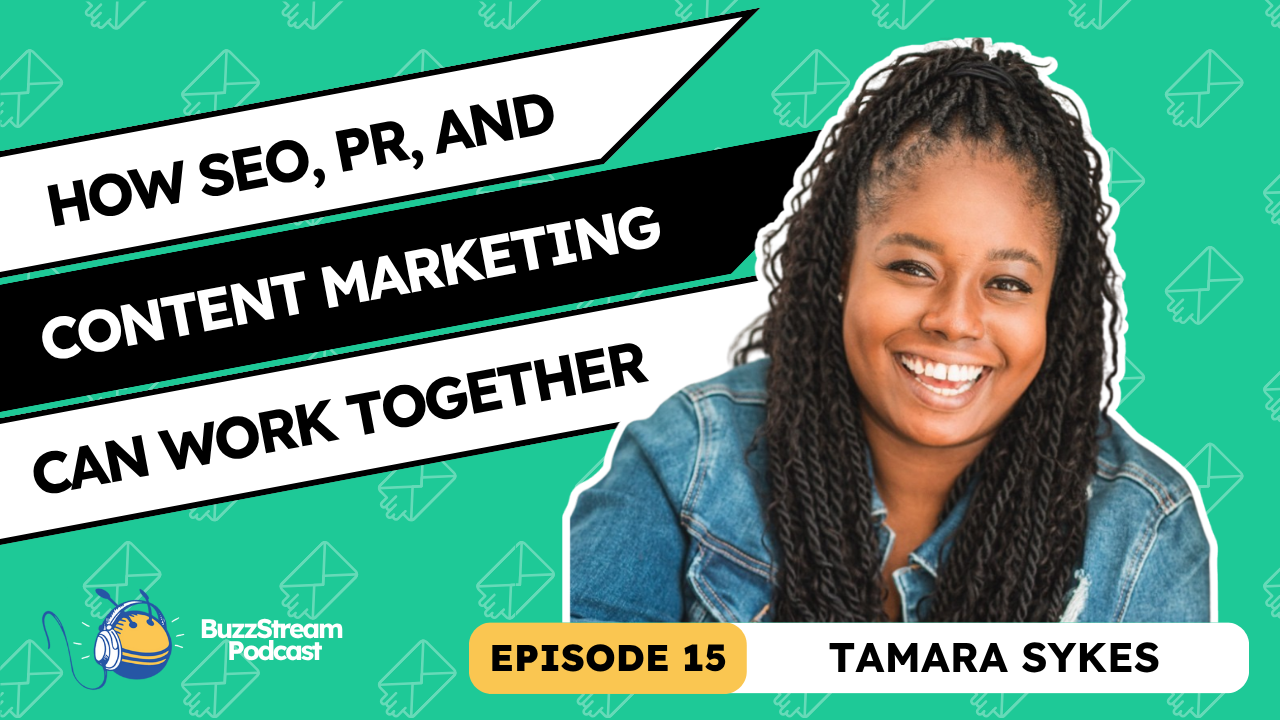
 Check out the BuzzStream Podcast
Check out the BuzzStream Podcast

